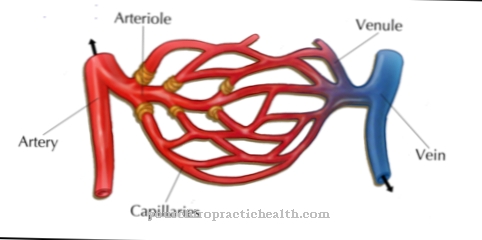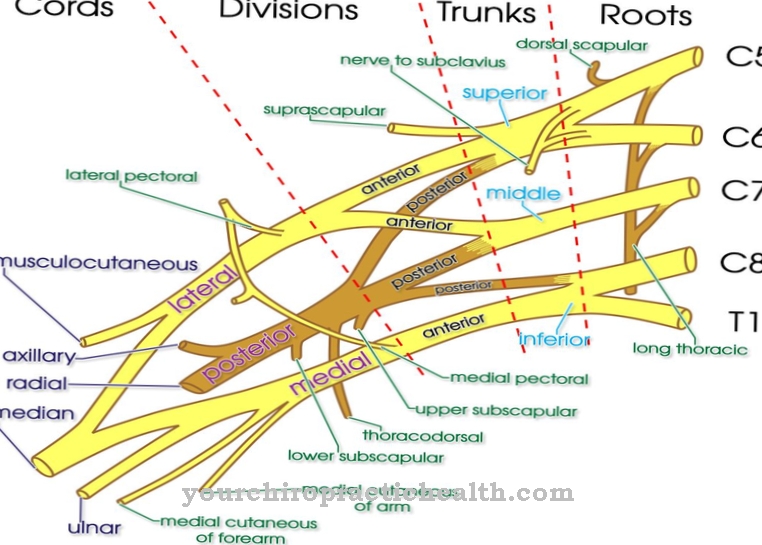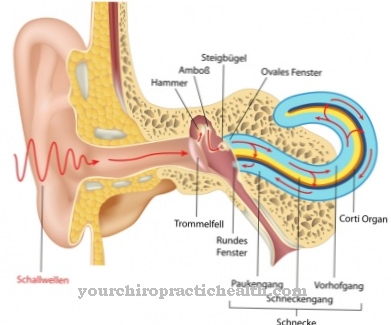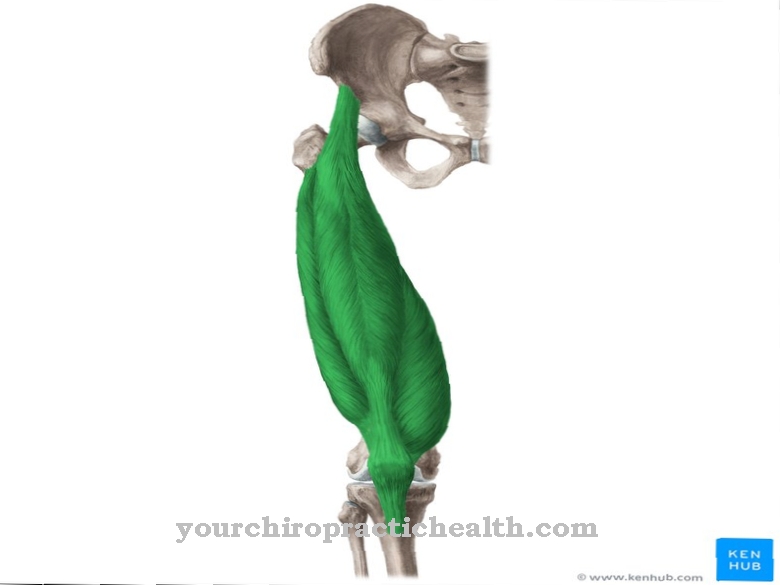The Endocrine system As a complex system controls the coordination of the functions of all organs of the organism. In humans, over thirty different hormones (messenger substances) are responsible for this. The medical department of endocrinology deals with the disorders within the endocrine system.
What is the hormonal system?
The hormonal system includes both endocrine glands and isolated cell groups in other organs that produce so-called hormones (messenger substances). These hormones are either carried endocrine via the bloodstream to the target organs or have a paracrine effect on neighboring cells.
Within the hormonal system (endocrine system), the production of the individual hormones is well coordinated with one another. There are messenger substances that act directly on the target organs. Other hormones have regulatory roles. They control the production of other hormones. The hormonal system is linked to the central nervous system via the hypothalamus. The hypothalamus is the superordinate control organ of all hormonal glands and produces releasing and inhibiting factors (hormones that promote or inhibit the downstream hormone production).
Their function is based on the conversion of processed sensory impressions into physical reactions via the endocrine system. The close coupling of the nervous system with the hormonal system is summarized under the term neuroendocrine system.
Anatomy & structure
The endocrine system consists of various endocrine glands and isolated hormone-producing cell groups from other organs distributed throughout the body. The endocrine glands include the pituitary gland, thyroid gland, parathyroid gland, pineal gland, adrenal gland or the islets of Langerhans from the pancreas.
The corpus luteum, ovarian follicles in the ovary and the intermediate Leydig cells in the testes are just as much a part of the endocrine system as the paraganglia, which as a collection of nerve cell bodies, as a result of their partial endocrine function, link the endocrine system and nervous system to one another to form the neuroendocrine system. Furthermore, all epithelia contain endocrine cells, but their hormones mostly have a paracrine effect (on the neighboring tissue). The pituitary gland is the link between the hypothalamus and the downstream endocrine glands.
While the hypothalamus still belongs to the central nervous system as part of the cerebellum, the pituitary gland is already a hormonal gland. It can therefore be viewed as a link between the nervous system and the hormonal system. The pituitary gland produces a number of controlling hormones or hormones that act directly on the target organ. As the central endocrine organ, it controls the functions of the other endocrine glands.
The production of the individual hormones is controlled via a control circuit. If there are not enough thyroid hormones, for example, the pituitary gland is stimulated to produce the thyroid stimulating hormone TSH. The reverse is also true. For example, in addition to the thyroid gland, the adrenal glands or the gonads are also subject to this regulating mechanism within the hormonal system.
Function & tasks
The messenger substances generated within the hormonal system each exert individual functions on the target organs. The islets of Langerhans in the pancreas are responsible for the production of insulin. Insulin regulates blood sugar levels. A lack of insulin leads to diabetes. The thyroid, in turn, produces thyroid hormones that stimulate the metabolism. The metabolism slows down when there is a thyroid hormone deficiency.
Conversely, when there is an excess of thyroid hormones, the metabolism is accelerated. The sex hormones in turn regulate the primary and secondary development of sexual characteristics and have a decisive influence on sexual behavior. Various glucocorticoids are produced in the adrenal glands. These are steroid hormones whose basic building block is cholesterol.
Glucocorticoids perform different tasks. They affect the metabolism, are responsible for the mineral balance, have an influence on the cardiovascular system and have an anti-inflammatory and immunosuppressive effect. Cortisol as a representative of the glucocorticoids controls, for example, gluconeogenesis (conversion of proteins into carbohydrates). The hormones produced (anterior pituitary lobes) or stored (posterior pituitary gland) in the pituitary gland have different functions. STH (somatotropin, growth hormone), prolactin or melanotropin have a direct effect on the organs of success. Somatropin regulates growth.
Prolactin is responsible for milk production during breastfeeding and melanotropin stimulates the growth of melanocytes. The hormones TSH, ACTH, FSH and LH stimulate the thyroid gland, the adrenal cortex or the gonads in this order. The hormones vasopressin and oxytocin from the hypothalamus are stored in the neurohypophysis (posterior lobe of the pituitary gland) and released when required.
While vasopressin (antidiuretic hormone) regulates the absorption of water in the kidneys, oxytocin is responsible for the contraction of the smooth muscles of the uterus at birth. Various endocrine cells of the endocrine system in the heart, kidneys, liver, gastrointestinal tract, thymus, central nervous system and other organs each have specific functions.
Diseases
Diseases within the endocrine system express themselves in different ways. If special organs are affected, there can be a deficiency, failure or excess of individual hormones with the corresponding health disorders. A lack of insulin, for example, causes diabetes.
With an underactive thyroid, the metabolism slows down and with it all bodily functions. An underactive thyroid manifests itself in severe weight loss, nervousness, higher heart rate and diarrhea. An overproduction of cortisol causes the so-called Cushing's syndrome with trunk obesity and increased susceptibility to infections. A loss of function of the adrenal gland results in potentially life-threatening Addison's disease due to a lack of cortisol and a lack of mineral corticoids.
If the anterior pituitary lobe fails, a whole range of hormones are affected. The dysfunction of the adenohypophysis known as Sheehan's syndrome manifests itself in a combination of symptoms of various hormone deficiencies. Hormone replacement for life is often required. If the sex hormones are affected by hormone imbalances, hypogonadism, sexual dysfunction or infertility are common. Since the endocrine and nervous systems are closely related, mental disorders can also affect the endocrine system.























.jpg)



